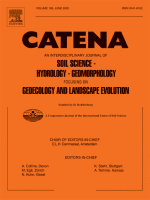![]() Alluvial gold mining in the Peruvian Amazon has become a key driver of land degradation and deforestation. The associated release of mercury in the environment poses direct human health risks and is likely to engender cascading effects throughout local food chains.
Alluvial gold mining in the Peruvian Amazon has become a key driver of land degradation and deforestation. The associated release of mercury in the environment poses direct human health risks and is likely to engender cascading effects throughout local food chains.
We carried out research in an alluvial gold mine concession in the Madre de Dios region to compare the degree of soil-borne pollution of heavy metals in areas where mining operations were abandoned more and less recently (1–5 and 6–8 years ago, respectively) with non-impacted old-growth forest areas. All heavy metals, were below permissible levels according to Peruvian and Canadian environmental quality standards. Mean As, Ba, Pb, Cu, Cr, Ni, V and Zn concentrations in impacted areas were 1.90 ± 1.51, 29.80 ± 22.87, 4.60 ± 2.55, 12.68 ± 8.13, 7.90 ± 3.98, 7.93 ± 3.89, 12.67 ± 6.62, and 26.65 ± 13.53 mg kg−1 dry matter (DM), respectively. Heavy metal concentrations were higher in non-impacted old growth forest soils than in mining spoils, and tended to increase with time since abandonment of mining operations.
Hg was not detected in any of the sites. Low heavy metal concentrations in mine spoils might beexplained because of intense volatilization, reduced metal retention capacity due to the low clay and organic matter content, and leaching processes related with soil rinsing which is part of the mining operations combined with intense rainfall. Our findings suggest that heavy metal concentrations in mining spoils should not be considered to constrain forest restoration efforts or the development of similar land uses as in comparable non-impacted high forest soils.
Velásquez Ramírez, M.G.; Guerrero Barrantes, J.A.; Thomas, E.; Gamarra Miranda, L.A.; Pillaca, M.; Tello Peramas, L.D.; Bazán Tapia, L.R.

